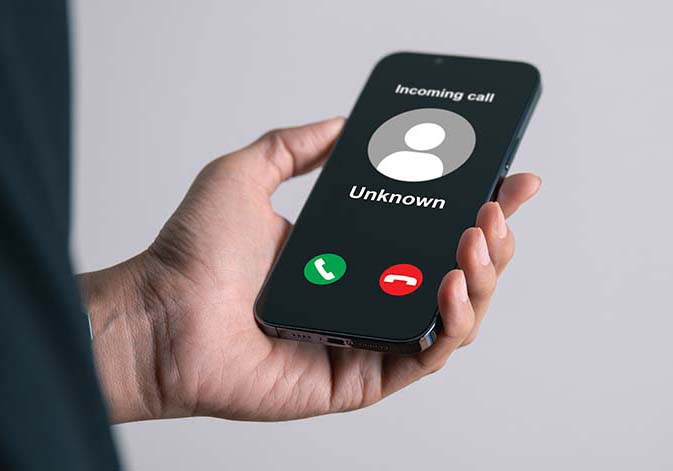Wangiri Fraud and Flash Calls
In the dynamic telecom landscape, fraudsters and businesses continually devise new schemes to exploit vulnerabilities, causing significant financial and reputational damage to operators and consumers alike. Increasingly carriers are facing the risks posed by Wangiri and flash calls, which are hard but not impossible to stop. The danger of these attacks are specifically large considering this fraud is hard to distinguish from regular traffic although fraudsters have a broad victim(customer)–base and can cause major revenue and reputation losses. Solutions like Sinapsio are at the forefront of battling such deceptive practices with advanced AI-based solutions.
Understanding Wangiri Fraud
Wangiri Fraud is not a novel concept but has evolved with technology. Originating from Japanese language, "Wangiri" means "one (ring) and cut." The scam involves a fraudster calling a number and hanging up after one ring, prompting the curious recipient to call back. These return calls often redirect to premium-rate numbers, incurring hefty charges that benefit the scammer.
According to the Communications Fraud Control Association (CFCA), this type of fraud was among the top five methods causing an estimated loss of $2.23 billion to the telecom industry in 2021.
Despite its longstanding presence, Wangiri fraud remains persistent, intelligently mixed with organic traffic and thus evading detection. Overall, Wangiri (and its variants) is highly attractive to fraudsters:
-
they incur very low costs (no charge on missed calls), -
it is spread over whole countries, even globally, -
loss per single customer is not so relevant (but in total it is in billions) -
no direct loss for telecoms ( but loss of reputation, trust etc)
Often, Wangiri is seen as a thing of the past. But do not be mistaken, this form of fraud still places second in the world’s most typical fraud risks. Wangiri attackers use a variety of strategies, beginning with traffic scanning, sending “waves” to flood carriers, and ultimately mixing and disguising it with normal traffic and simulating organic growth. Traditional systems, however, are not capable of combatting many forms of Wangari fraud. They are mostly reacting to CDR analysis and growing pressure on customer support. Thus, traditional anti-fraud systems simply cannot detect and see the attack happening in real-time. Besides the operators are facing a huge problem: how to distinguish good calls from malicious ones.
Simply blocking a certain originating breakout or the whole country can be effective yet damaging. Damaging, as good callers would also be punished, often leading to a situation where many countries would be blocked, causing degraded customer satisfaction and service quality. Furthermore, this solution can never be permanent, as fraudsters adapt their strategy faster than ever.

The Rise of Flash Calls
While Wangiri calls are a fraud by its definition, “Flash calls” are very different and the clarity whether it is fraud or not is not that plausible. Having very similar behaviour on the signalling level, they share very little similarities in regards of their targeted result. They are typically associated with bypassing traditional SMS A2P streams, used for identity proof (usually associated with 2FA authentication).
Flash calls are a great example how technology and innovation can result in new schemes to exploit vulnerabilities, causing significant financial leakages for MNOs.
Flash-calls from different perspectives:
-
they incur very low costs (no charge on missed calls), -
it is spread over whole countries, even globally, -
loss per single customer is not so relevant (but in total it is in billions) -
no direct loss for telecoms ( but loss of reputation, trust etc)
Now, the markets are cheering the new service while cornering MNOs, (miss)using their infrastructure for free and monetizing at the expense of the other.
While MNOs are the clear losers here, the question is what they can do to enforce a fair monetization – for the usage of their networking services.
The answer is rather simple: modern anti-fraud solutions are vital to ward off the dangers of flash calling.
According to Juniper, Flash Call volumes are set to increase by a 25-fold until 2026. Although some operators and firewall vendors consider them a form of SMS OTP bypass fraud, their classification as fraudulent varies. However, it is clear that these calls pose a major revenue leakage risk, as the brevity of flash calls makes them harder to trace.
Flash Calls - Are they fraud?
The debate around flash calls, and their role in the industry is one that is greatly disagreed on within the industry and amongst regulators. Considering flash calls have no duration and are thus unbillable, many operators not even have a technical ability to consider the risk of these calls. This not only poses confusions to customers, reputation, and revenues, but also a risk to personal and informational safety; thereby further growing the risks.
-
Many governments have not implemented regulation on flash calls for OTP delivery. -
The existing contractual relationships are not violated when flash calls are used, as these contracts were mostly drafted long before the adoption modern smartphones. -
loss per single customer is not so relevant (but in total it is in billions)
However, the choice of ignoring flash calls and delaying active measures, is often followed by decreased reputations, decrease in A2P messaging services and an overall decline in revenues. Thus, modern anti-fraud solutions are vital to ward off the dangers of flash calling.
Sinapsio's Response to Telecommunications Fraud
To tackle these threats, Sinapsio's AI-driven tools provide a market-unique, real-time detection and prevention, adapting to new patterns of fraudulent activity. It's crucial for mobile network operators to integrate robust fraud prevention and monetization strategies into their 2023 business plans to protect their revenue and customer trust. It is vital that carriers stay one step ahead of Wangiri and Flash Fraudsters to protect their customers; which can easily be done with a system like Sinapsio’s. Sinapsio’s systems are designed to detect and analyse patterns consistent with Wangiri and flash call schemes. Moreover, our systems are capable of learning alongside fraudsters, updating our protective shield autonomously and constantly. Using real-time data, our solutions can identify and flag suspicious numbers, even when tactics shift, or new patterns emerge. As the telecommunication landscape continues to grow, vigilance against such schemes is paramount. Sinapsio remains at the forefront, harnessing the power of AI to safeguard the telecom industry from these fraudulent activities.

